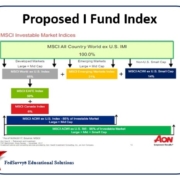Which is Better? A Roth IRA or Roth TSP?
Which is Better? A Roth IRA or Roth TSP?
By Carol Schmidlin
Both are tax free, however there are some differences.
How much can you put in a Roth IRA? In 2024 you can contribute $7,000 and if you are turning 50 in 2024 you can contribute $8,000. However, a Roth IRA has phase out limits based on your modified adjusted gross income (MAGI). If you are married filing jointly, they are $230,000 – $240,000. If filing single the phase out limits are $146,000 – $161,000.
You can convert $23,000 and if you are turning 50m in 2024 you can contribute a total of $30,500.
If your income is over the limit to contribute to a Roth IRA, you may be eligible for a Back-door Roth IRA. Anyone that has earned income can contribute to an IRA, then convert it to a Roth IRA. The caveat is if you have an IRA already, the new contribution will be prorated, and you will have to pay taxes. However, you can roll your IRA into TSP, then make your contribution to a traditional IRA and convert to a Roth IRA.
Here is an example of prorating:
Natalie has an IRA of $5,000 in after tax contributions. She earns too much to contribute to a Roth IRA, so she decides she will do a Backdoor Roth IRA. Her non-Roth IRA balance is $80,000. That means 6.25% of her contributions are not taxable ($5,000 non-deductible amount/$80,000 (total non-Roth IRA balance). Follow link to read Carol’s full article. https://fedsavvy.com/wp-content/uploads/2024/04/What-is-Better-a-Roth-RSP-or-a-Roth-IRA-Revised.pdf





